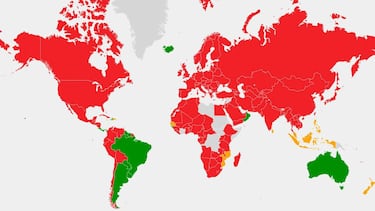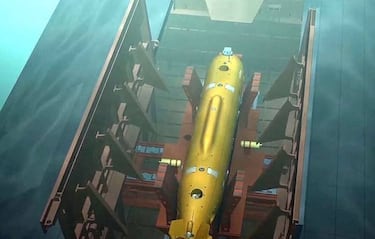The safest countries in the world in the event of a nuclear war: where does the U.S. sit?
A study by Nature Food reveals that following a nuclear war, only ten countries would survive a global famine.


If the unthinkable were to happen – a full-scale nuclear war –what happens next isn’t just about fallout shelters or military dominance. It’s about food, survival, and where you live. A sobering report from Nature Food paints a stark picture: global crop failures, fisheries collapse, and mass starvation would likely follow nuclear war. But some countries might escape the worst of it. Let’s examine where the United States stands in this bleak scenario and what makes a country “nuclear-proof” when it comes to basic survival.

What a nuclear winter would mean for survival
When nuclear weapons detonate, their immediate destruction is only the beginning. Fires in cities and industrial zones would send enormous amounts of soot into the stratosphere, blocking sunlight and dramatically cooling the planet – a phenomenon scientists call “nuclear winter.” Temperatures could drop by over 20°F in some regions, disrupting rainfall and growing seasons.
This climate shock would decimate agriculture. Wheat, rice, soybeans, and corn – key global crops – would wither in the cold. Fisheries, already sensitive to temperature changes, would see significant declines. Livestock feed would dwindle, and food exports would halt as nations hoard resources. For many countries, the resulting calorie shortages would be catastrophic.
The ‘winners’ in a nuclear catastrophe: where people might survive
According to the study, only 10 countries could likely sustain their populations in such dire conditions. They’re largely agricultural powerhouses or nations with small populations and self-sufficient food systems. The list includes:
- Argentina
- Brazil
- Uruguay
- Paraguay
- Costa Rica
- Panama
- Haiti
- Iceland
- Australia
- Oman
These countries share some key traits: temperate or tropical climates that might see less dramatic cooling, low reliance on food imports, and agricultural systems capable of feeding their people even as global trade collapses.

Interestingly, Australia and Iceland, despite their vastly different environments, come out as potential havens. Australia’s wheat production might hold steady under nuclear winter conditions, while Iceland’s reliance on geothermal energy and local fisheries provides a unique advantage.
Why the U.S. isn’t among the “green zone”
The United States doesn’t make the above “safe” list. Despite being a global food producer, America’s reliance on industrial agriculture and a high-calorie diet could work against it. The cooling effect of nuclear winter would devastate crops in key growing regions, like the Midwest. Livestock feed would disappear, and fisheries would collapse. Without significant food imports, even the wealthiest nation would face severe shortages.
The study also notes that even modest nuclear conflicts, like one between India and Pakistan, could inject enough soot into the atmosphere to cause widespread famine. A larger war involving the U.S. and Russia – home to over 90% of the world’s nuclear arsenal – would make survival odds even grimmer.

What about other wealthy nations?
Europe fares no better. Countries like Germany, France, and the United Kingdom face similar challenges: dense populations, limited agricultural output relative to demand, and dependency on imported food. Canada, with its vast farmland, might seem like a contender, but its high latitude makes it vulnerable to extreme temperature drops.
The grim reality is that no nation is fully safe from the ripple effects of nuclear war. Even countries in the “green zone” would likely struggle with resource hoarding and the strain of refugees. The U.S., despite its size and resources, would need massive shifts in agricultural practices, food storage, and local sustainability to weather such a crisis.

For now, your best bet might not be where you live but how you prepare. Whether that’s advocating for disarmament, supporting local food systems, or diversifying energy sources, the lessons from this study are clear: survival in a nuclear catastrophe is as much about prevention as it is about response. Let’s hope it never happens.
Related stories
Get your game on! Whether you’re into NFL touchdowns, NBA buzzer-beaters, world-class soccer goals, or MLB home runs, our app has it all.
Dive into live coverage, expert insights, breaking news, exclusive videos, and more – plus, stay updated on the latest in current affairs and entertainment. Download now for all-access coverage, right at your fingertips – anytime, anywhere.
Complete your personal details to comment